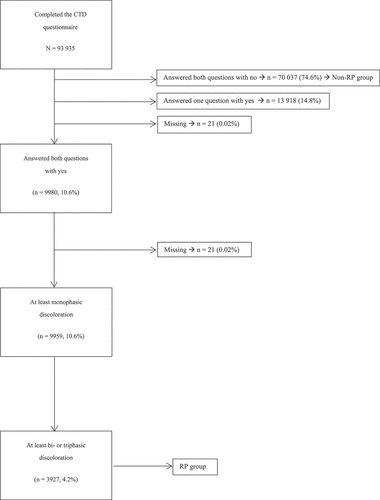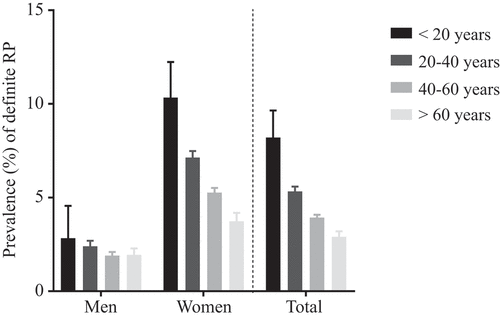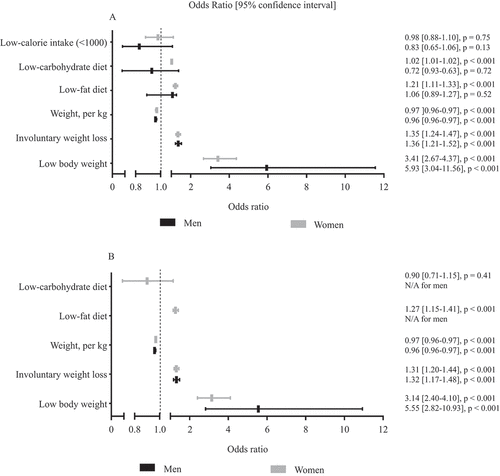Figures & data
Figure 1. Overview of the reported discoloration of the hands. A total of 93 935 subjects completed the questionnaire, of whom 10.6% reported monophasic discoloration. Of the subjects who reported monophasic discoloration, 4.2% also reported biphasic or triphasic discoloration. CTD, connective tissue disease

Table 1. Patient characteristics of the total group, and participants with and without Raynaud’s phenomenon (RP)
Figure 2. Prevalence (95% confidence intervals) of Raynaud’s phenomenon (RP), in the different age groups, shown for men and women

Figure 3. (A) Univariate and (B) multivariate analysis of the relationship between the presence of Raynaud’s phenomenon and low body weight, involuntary weight loss, body weight (kg), low-carbohydrate diet, low-fat diet, and low-calorie intake, shown for men and women. In the multivariate analysis we corrected for creatinine level (as a surrogate measure of muscle mass), daily caloric intake, age, known connective tissue disease., smoking, and use of medication (i.e. beta-blocking agents, immunosuppressive drugs, and central-acting sympathomimetics). In women, we additionally corrected for hormonal status (pre- vs post-menopausal, receiving hormonal contraception, receiving hormonal treatment other than contraception)

